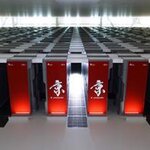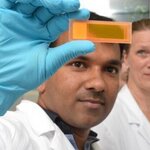Technology

It is America's worst kept secret - the government has top secret military installations.
But the hype around Area 51 rapidly grew to be about aliens and UFOs. Instead, it was a more typical Cold War tale. President Eisenhower had signed off on a secret reconnaissance plane and the military wanted it flown from a secret location.
The plane became the well-known U-2 and a CIA official, an Air Force officer and the now legendary Kelly Johnson, first team leader of the Lockheed Skunk Works and the guiding hand behind the P-38 and later the U-2 and the SR-71, flew over Nevada to find a…
Physicists have successfully teleported information in a solid state system for the first time - they moved information from A to B for the first time in an electronic circuit, similar to a computer chip.
The essential difference between their method and the usual computer chip is that the information is not stored and processed based on the laws of classical physics, but on those of quantum physics. The researchers were able to teleport information across a distance of about six millimeters, from one corner of a chip to the opposite one. This was shown to be possible without transporting…
Which strategies give players an edge at winning in multi-player real-time strategy games like Warcraft III/ Defense of the Ancients or Starcraft II?
An analysis technique by North Carolina State University computer scientists offers extremely precise information about how a player's actions affect a team's chances of winning, and could be used to develop technology for use by players and developers to improve gameplay experiences.
Their technique various existing analytical tools to evaluate logs of player actions from thousands of real-time strategy games. They then used that…
A plastic material already used in absorbable surgical sutures could also administer antibiotics to patients with brain infections, scientists report in a new study. Use of the material, placed directly on the brain's surface, could reduce the need for weeks of costly hospital stays now required for such treatment, they say in the journal ACS Chemical Neuroscience.
Infections are life-threatening complications that occur in about 5 to 10 percent of patients who have brain surgery. Current treatment involves intravenous antibiotics for up to eight weeks and extended, costly hospital stays.…

The K Computer has been used by researchers from the RIKEN HPCI Program for Computational Life Sciences, the Okinawa Institute of Technology (OIST) in Japan and Forschungszentrum Jülich in Germany to carry out out the largest general neuronal network simulation to date: 1.73 billion nerve cells connected by 10.4 trillion synapses.
The simulation was made possible by the development of advanced novel data structures for the open-source simulation software NEST.
Using NEST, the team, led by Markus Diesmann and Abigail Morrison of the Institute of Neuroscience and Medicine at Jülich…

In the beginning, there are embryonic stem cells, which divide and increasingly differentiate as they do so. The ensuing tissue cells remain in a stable state, a skin cell does not spontaneously change into a nerve cell or heart muscle cell.
The applications for embryonic stem cells
are many: When nerve tissue becomes diseased, for example, then doctors could take healthy cells from the patient's own skin. They could then reprogram these to develop into nerve cells. These healthy nerve cells would then be implanted into the diseased tissue or even replace it entirely. This would treat, and…
The Muon g-2 team has completed transport of a 50-foot-wide electromagnet from Long Island to the Chicago suburbs in one piece. The move began on June 22nd at Brookhaven National Laboratory, and concluded this week at Fermilab, a 3,200 mile journey - at least the way they did it.
Why such a torturous route? They couldn't flex it. Or twist it. And it doesn't exactly travel well on highways.
Muon g-2 (pronounced gee-minus-two) will study the properties of muons, subatomic particles that live only 2.2 millionths of a second, and its results could open the door to new realms of particle…

40 years ago, a technique now used for detecting tiny quantities of molecules, in situations from crime scene forensic analysis, to drug detection, to establishing the origins of works of art, was discovered.
But despite there being a dozen CSI shows that use this on American television, you probably never heard of it.
In the early 1970s, researchers discovered that by roughening the metal surface upon which the molecules they were examining had been placed, they could increase the signal by which they could detect these molecules - by a million times. It became arguably the most…

As the world population grows, one terrific science and technology solution to expensive and environmentally damaging fertilizers would be enabling all of the world's crops to take nitrogen from the air.
Nitrate pollution is a major problem as is the pollution of the atmosphere by ammonia and oxides of nitrogen. In addition, nitrate pollution is a health hazard and also causes oxygen-depleted 'dead zones' in our waterways and oceans. A recent study estimates that that the annual cost of damage caused by nitrogen pollution across Europe is between £60 billion and £280 billion per year.…

Who ever guessed that sugar could be the downfall of the Bubonic Plague?
Diagnosing the presence of Yersinia pestis, the cause of the zoonotic disease also called the Black Death, may soon be much faster thanks to a simple, inexpensive and reliable glycomics method of detecting the bacterium.
A research team specializing in glycochemistry and glycobiology first identified and synthesized an oligosaccharide structure on bacterial surface before combining it with a protein to heighten the immunological effect. The presence of antibodies against this surface glycan in the…